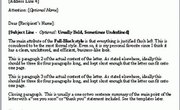Letters of protest are effective ways to express your opinions to an entity such as a newspaper editor, institution, corporation or elected official. Well-written letters of protest usually get read, and they are taken seriously because they represent the concerns of a sector of the population. Be clear and concise; shorter letters are effective and more likely to be read from beginning to end.
Details
Email often is the mail delivery method of choice because it is fast and convenient, but don't discard the idea of a handwritten letter. According to Canadian Journalists for Free Expression (CJFE), handwritten letters carry impact because they are more personal than email and are unusual. However, an emailed or typed letter printed with a clear font are options, especially if your handwriting isn't neat and legible. Either way, direct the letter of protest to a specific person. Include a title if appropriate. Be sure you have correct spelling and grammar.
Do Your Homework
Writing a protest letter doesn't require you to have expertise or an in-depth grasp of the situation, but you should research the issue to be sure you understand the situation and are up to date on its current status. Your letter won't be effective if you can't provide valid reasoning and evidence to support your claims. Choose your battle and stick to one subject at a time. Don't muddy the message by expressing complaints about multiple issues.
Maintain a Respectful Tone
While a letter of protest must be firm and direct, your message won't get much traction if the letter isn't polite and constructive. Don't berate or insult the recipient. Never resort to threats or name-calling. Speak your mind clearly without profanity. Even though you may be angry, express your opinion without being rude or abusive.
Getting Started
Introduce yourself to begin the letter. In one or two sentences, mention your background as well as pertinent details such as your occupation, education or training. Once you have laid the groundwork, get straight to the point. Summarize the situation and state your concerns in a few short paragraphs, then back up your position with solid reasoning and facts. Explain how the matter affects you; personal stories are more effective and more likely to be taken seriously than lists or statistics.
Describe Expected Action
Clearly state what action you expect the letter recipient to take, such as specific legislation or correction of a problem or situation. Note when you wish changes to occur and mention dates if the matter is deadline oriented. Request a reply that outlines the recipient's response and intended action. State clearly that a rubber-stamped form letter is not acceptable.
Closing the Letter
To end on a positive note, thank the recipient for reading your letter. Sign your full name and include contact information -- either an email or mailing address as well as your phone number. Proofread carefully for spelling and grammatical errors, then double check your facts before sending the letter.
Related Articles
References
Writer Bio
M.H. Dyer began her writing career as a staff writer at a community newspaper and is now a full-time commercial writer. She writes about a variety of topics, with a focus on sustainable, pesticide- and herbicide-free gardening. She is an Oregon State University Master Gardener and Master Naturalist and holds a Master of Fine Arts in creative nonfiction writing.











